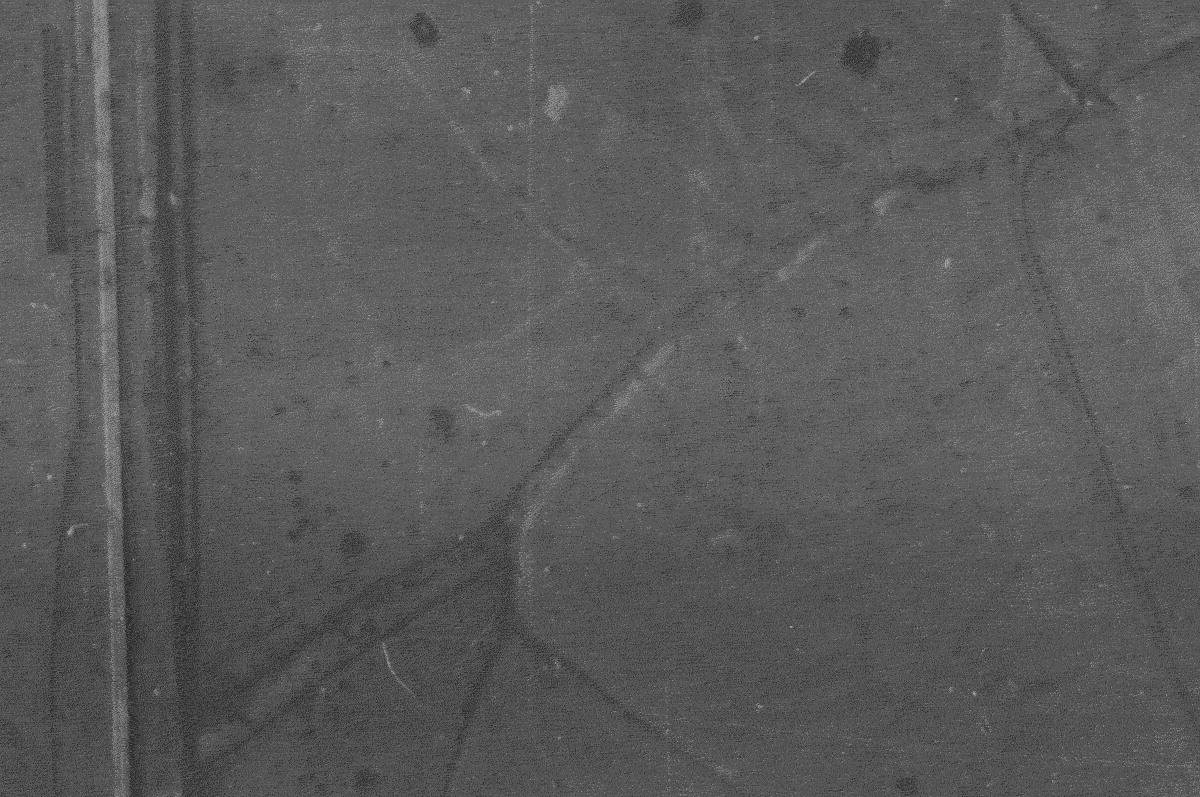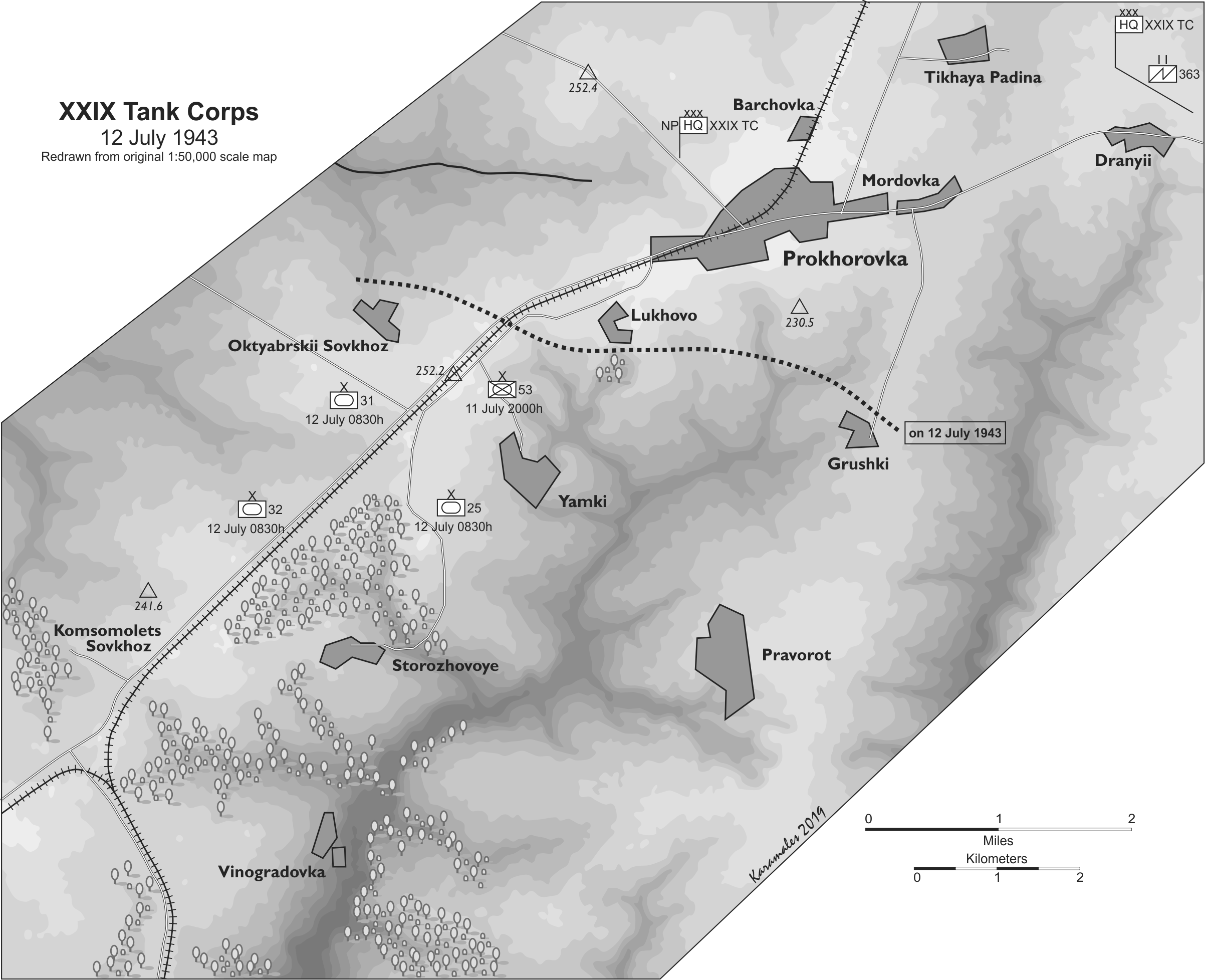
Of course, the Battle of Prokhorovka is famous for the hundred German Tiger tanks that were destroyed by the Fifth Guards Tank Army. In the Fifth Guards Tank Army report of 30 September 1943, they claimed to have killed 53 Tigers from 12-24 July. Somehow, this story grew to 70 Tigers killed on the tank fields of Prokhorovka (Rotmistrov, 1960) and I gather in some accounts it was rounded up to the nearest hundred. It became the standard Soviet story, and the figures 70 and or 100 Tiger tanks killed being repeated in many post-war accounts, including Rotmistrov’s. It was an absurd claim that oddly enough was picked up without critical analysis by many western historians and repeated. Yet the German unit records were readily available, but apparently no one thought of checking them. Literally dozens of books and articles were written over three decades with these false claims in them. The situation was so appalling that I ended up adding an appendix to my Kursk book called “A History of the Histories” that discusses how these obviously absurdly incorrect legends showed up in books by established historians like Goeffrey Jukes, Martin Caidin, John Erickson, and Glantz and House (When Titans Clashed, 1995).
In 1993, Trevor Dupuy warned me that the Battle of Prokhorovka did not go as the legend says it did. Even though his book Great Battles on the Eastern Front (1982) picked up the swirling tank battle story, they (Dupuy and Martell) were careful not to state any armor loss figures (“Both sides suffered heavy losses…”, page 79). So, the week before my first meeting in Moscow I ran over to the archives and pulled up the SS Panzer Corps unit records for the 11th, 12th and 13th of July. This basically took a half-day and from those records alone, the story was clear. Apparently for the last three decades none of the dozens of western historians writing about Prokhorovka had taken the time to do that.
We then flew to Moscow to meet with Col. Sverdlov and our Russian research team. Col. Fyodor Sverdlov was a war veteran who fought with an infantry battalion in the Battle of Moscow in 1941 and was a staff officer through most of the rest of the war. He was wounded three times. After the war he had written eight or more books (plus ghost-wrote some books for higher ups), became a PhD and was a professor at Frunze Military Academy. Col. Sverdlov started our conference in October 1993 by saying something like: “I was at Prokhorovka right after the war, and I didn’t see a hundred Tigers.”
This was the before I mentioned the SS unit records I came armed with. I was prepared for an extended and painful discussion on the subject, but it was clear from the start that Sverdlov, having served, did not believe the Communist propaganda (unlike so many of the western historians had). This would be a subject revisited multiple times in many other discussions. I found him opened minded and fairly unbiased. He was also very critical of the Soviet Army and the way that they operated. He was independent and analytical, and not overly nationalistic.
So, LSSAH had 4 Tigers operational on the 12th of July (most sources agree on this). According to Frieser, page 126, they did not start the day on the front line (which is not unusual). The company of four Tigers arrived during the battle and deployed on the division’s left wing. After that…..I don’t know what they did. This would have probably put them opposite to the XVIII Tank Corps. There are reports that in Andreyevka, the 181st Tank Brigade met a large column of German tanks (Kursk, page 932, Prokhorovka page 318). Andreyevka is marked on the map above (from page 317 of Prokhorovka).
Now, we do not know whose tanks are those that were in that “large column.” It could have been the tanks from one of the two panzer battalions of Totenkopf (Pz IIIs and IVs), or it could have been the Totenkopf SS Assault Gun Battalion (StuG IIIs), or the Totenkopf SS Self-propelled Antitank Company (Marders), or the unaccounted for extra panzer battalion or panzer company that LSSAH appears to have had (Pz IVs), or the LSSAH Assault Gun Battalion, or the LSSAH Self-propelled Antitank Company, or some combination of this above. Clearly, four Tigers by themselves don’t account for a “large column.”
In the thirty-third paragraph of Ben Wheatley’s article (starting with “On the other side of the ditch…”), he also has the four Tigers coming up and deploying on the division’s left wing. He then has an extended discussion of the Tiger’s operations starting at paragraph thirty-nine (“At the same time as Hill 252.2…”). He has them engaged in a major dual with the 170th Tank Brigade and then the 181st Tank Brigade. It almost appears from his account that these 4 Tigers single-handedly fought and halted breakthroughs by these two Soviet tank brigades. This seems a little much.
One source given is Frieser, page 127, which does quote Georg Loetsch, one of the four Tiger tank commanders. He states “In the morning, the company was on the left wing of II Armoured Battalion when about 50 enemy tanks, from the cover of copses and hedges, came storming towards us in a broad wedge formation…” He then claims to have shot two T-34s. It appears to be a big step from this quote to single handedly having four Tigers stop two attacking tank brigades. If he shot 2, and if the other 3 Tigers did as well, then this is only 8 tanks. Who shot the rest?
Now, I did not include the Loetzsch account in my books. Perhaps I should have.
But, there clearly were other German forces in the area. The XVIII Tank Corps records are a little confused and spotty on this action, but there are a few lines that stand out:
From: Combat Report #37, 1400, July 12, 1943:
The enemy is putting up stubborn resistance and is falling back in the pt, 217.9-Komsomolets Sovkhoz direction. Enemy artillery is firing intensively on our troops from the Greznoye area.
Our neighbor on the left [XXIX Tank Corps] is fighting for Komsomolets Sovkhoz.
The XVIII Tank Corps reached the following lines:
110th TBde: 500 meters east of Mikhalovka
181st TBde: occupied Oktyabrskii Sovkhoz and is fighting along the line Andreyevka-ht. 241.6
170th TBde: fighting along the line of the ravine southeast of Mikhalovka.
From: Combat Report #38, 0330, July 13, 1943
In attempting to reach the Belgorod highway, XVIII Tank Corps unexpectedly ran into the enemy’s well-organized resistance, which featured buried tanks and assault guns along the line ht. 217.9-ht. 241.6
From: Account of 18th TC’s Combat Activities, July 12-24 1943:
Time of attack is 0830 on July 12…At 0830 the corps’ units attacked (just mentioned because Ben Wheatley appears to use a different time in his account).
The terrain in the corps’ attack zone is cut by three deep ravines….which is the 181st and 170th Tank Brigades, advancing in the first echelon, were forced to attack on the corps’ left flank near the enemy strong point at Oktyabrskii Sovkhoz. 170th TBde, attacking on the left flank, by 1200 had lost 60% of its equipment.
Despite these losses, overcoming the enemy’s fire resistance, the corps’ units took the Oktyabrskii Sovkhoz and by 1200 were fighting along the line: 181st TBde-Andreyevka-ht. 241.6; 170th TBde-the ravine southeast of Mikhailovka; 32nd MotRBde was fighting for Andreyevka.
The corps’ units, continuing to carry out their mission, by the end of the day had reached the line 200m east of the Bogoroditskoye church-southern outskirts of Vasilyevka-Andreyevka-two windmills at Preslestnoye-further along the northern slopes of the ravine southeast of Andreyevka-the Oktyabrskii Sovkhoz.
By the end of the day the enemy attempts a frontal tank attack from the Kozlovka-Greznoye area, with the simultaneous attempt bypass the corps; units from the Kozlovka-Polezheyva direction, using Tiger tanks and self-propelled guns and intensively bombarding our lines from the air.
This last reference was clearly to the actions of the Totenkopf SS Division north of the Psel. I have been there. It is called the Psel River. It looks like a creek. There are pictures of it at Prelestnoye in my book (see pages 241 or 184, depending on which book you have access to).
XVIII Tank Corps encountered the enemy’s well-organized and powerful anti-tank defense, consisting of tanks and assault guns along the line of ht. 217.9-ht. 241.6.
In order to avoid excessive losses in men and equipment, I ordered the corps’ units to take up defensive positions along it new lines.
A certain irony in the last paragraph. Bakharov (XVIII Tank Corps) was relieved of command shortly after the battle, although the XXIX Tank Corps had suffered worse losses.
From: Operational Report #1, 1900, July 12, 1943, 5th GTA
18th TC, with 80th Gds Mortar Rgt, advancing from the line Prelestnoye-Prokhorovka, by 1400 captured Mikhalovka.
At 1400 the corps repulsed an enemy counterattack by 50 tanks from the Bororoditskiye area, and by 13 “Tigers” from the area of ht. 226.6
If the first part of this last sentence in correct, then that would mean there were certainly more tanks than 4 Tigers in the area. Which German tanks were there and where did they come from? The second part of this sentence is clearly an attack by up to 11 Tigers of Totenkopf SS.
The Corps’ further advance was contained by the enemy’s powerful artillery and mortar fire from the Greznoye area, and by tank fire from the Bogoroditskoye area.
Again, tanks in Bogoroditskoye, which is on the Psel, between Andreyevka and Vasilyevka.
From: Operational Report #2, 0700, July 13, 1943, 5th GTA
18th TC, with 80th Gds Mortar Rgt, by the end of July 12 had taken the eastern outskirts of Vasilyevka, but its further advance was halted by the enemy’s artillery and tank from the area of the western outskirts of Vasilyevka. The corps is on the line Petrovka-Mikhalovka and has consolodated and is regrouping.
From: 5th Guards Tank Army’s Combat Activities from July 7-24, 1943 (compiled September 30, 1943)
The initial time of 1000 set for the attack was moved back by the front commander to 0830 on July 12. At 0830, following a short artillery preparation, the corps moved into the attack.
170th and 181st Tank Brigades….and by 1430, after fierce fighting, had taken the Oktyabrskii Sovkhoz and had reached Andreyevka and Vasilyevka, and advance of 6-7 km.
At 1330 the first-echelon brigades were fired on by 13 “Tiger” tanks from the area of ht. 226.6, which were moving in the direction of the northwestern outskirts of Mikhailovka.
This is Totenkopf firing at them. There is only one mention in the Soviet records I have of them engaging any Tigers to their west or south, meaning on their side of the Psel River (it is in the next paragraph). Dr. Wheatley’s account has the Tigers operating from “Hill” 241.6 (grid location 33.3 and 53.6 or four km from SW corner of Vasilyevka at 30-56).
36th Gds Tank Regiment [the Churchills] encountered heavy fire from Tigers and AT guns from the ravines 2 km south of Mikhailovka, where it suffered heavy casualties.
In Andreyevka 181st TBde met a large column of enemy tanks. As a result of the battle that followed, the Germans suffered heavy casualties and were thrown back on Kozlovka.
Now, I put the first part about the “large column” in my book(s). I did not put the second part in, as this is the usual exaggeration of results that appears in this report written by Rotmistrov and Grishin. In their defense, bad results in their actions could have resulted in their arrest. Self-preservation clearly was a factor influencing this account, especially in light of Stalin’s call the evening of 12 July (see pages 1024-1025 or 404-405).
At 1800 on July 12 the corps’ brigade finally took Vasilyevka and reached Kozlovka.
The corps, on the line ht. 279.9-3 km southwest of Kozlovka-ht. 241.6, encountered heavy enemy fire resistance from assault guns, tanks buried in the ground, and fierce aerial bombardment, which made any further advance impossible.
Again, the mention of assault guns (which a lot of sources seem to forget about) and dug-in tanks. Not sure about the dug-in tanks, but both Totenkopf SS and LSSAH Division’s had an assault gun battalion of 10 to 21 StuG IIIs ready for action Armed with a 75mm gun and well armored, these were the second best “tanks” on the battlefield (after the Tigers).
Anyhow, it is clear the XVIII Tank Corps was facing a lot more than just 4 Tigers. The question is, who else was there?




